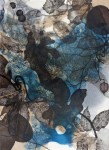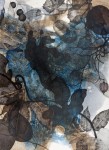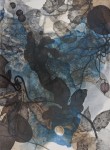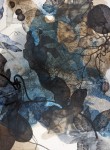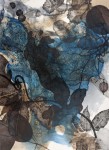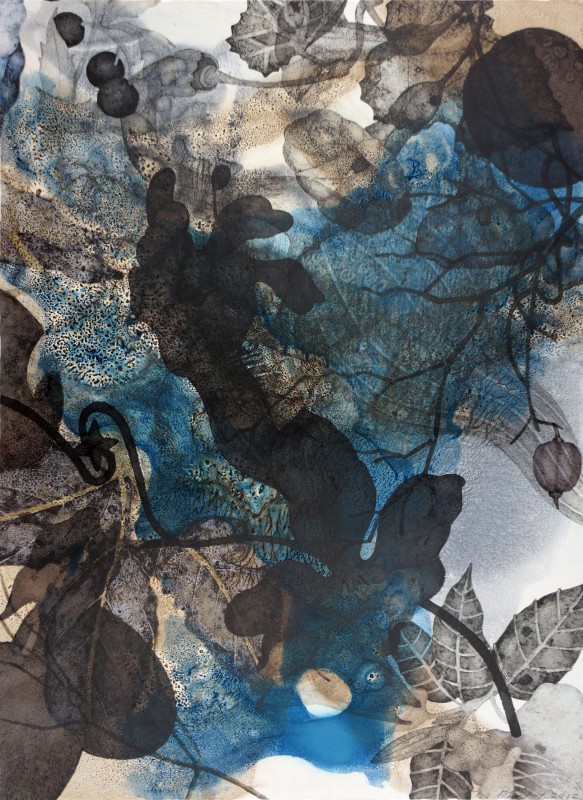
mixed media (etching ink, asphaltum, oil paint) and acrylic inkjet on paper
40.5 x 29.75 in.
unique monoprints
co-published with Nicholas Price
Timothy Berry’s Hatsuboku series uses a tour de force of printmaking technique to consider humanity’s place in nature. Berry, an accomplished painter who teaches at the San Francisco Art Institute and UC Davis, reveals that the inspiration for these prints goes back to his days reading Paradise Lost and Finnegan’s Wake as an undergraduate English major. While working at a bar in the late 1970s, Berry was stabbed repeatedly and left for dead during a robbery; nearly having been murdered merely for having witnessed a crime led Berry to consider the theme of being sacrificed or exiled for the sins of one’s community or group. Hatsuboku examines a “nature separate from man,” says Berry: “humanity exiled from nature, or nature not seen through human eyes.”
Berry used sheets of plexiglas as matrices for these prints, pouring layers of ink and asphaltum onto each plate to achieve Hatsuboku‘s moody, delirious textures; the series’ title, which literally translates to “ink splashing forth,” refers to a traditional Japanese style of painting based on quick splashes of ink. These were further enhanced by layers of digitally printed floral imagery, as well as numerous passages hand painted in oil and alkyd. Berry notes that he painted in not only the birds and flowers but also stretches of negative space, intentionally conflating perspective and the relative sizes of animals to diminish the sense of human involvement. “I used the natural interactions and movements of the materials on the plate,” he explains, “to further remove the ‘artist’s hand’ and intentionality that might suggest a human creation.” Taken together, the Hatsuboku prints suggest sexual reproduction, growth and decay, and the pervasive metamorphosis that characterizes the lives of all flora and fauna — including humans.
-Nick Stone
show prices
Prices and availability are subject to change without notice.The copyright of all art images belongs to the individual artists and Magnolia Editions, Inc.
©2003-2025 Magnolia Editions, Inc. All rights reserved. contact us

